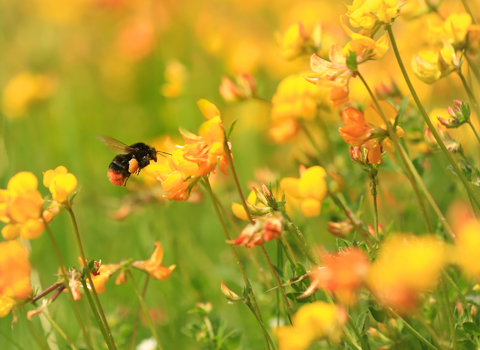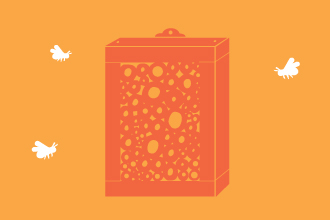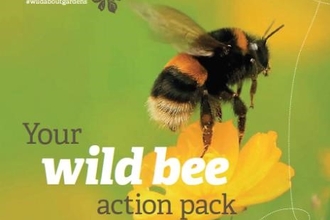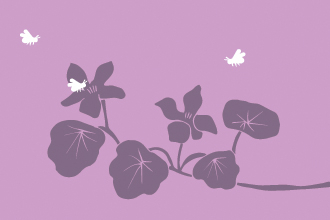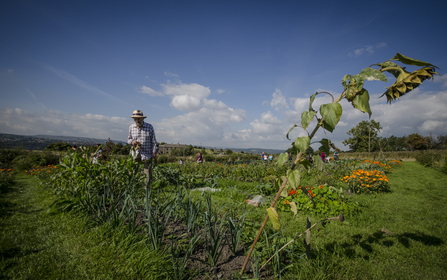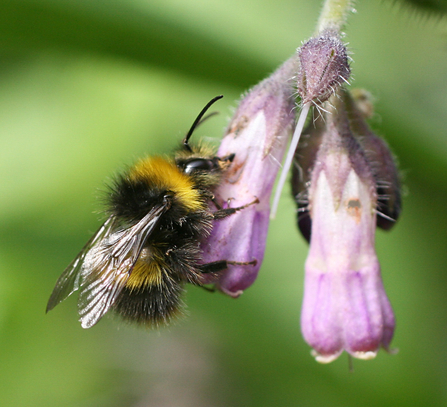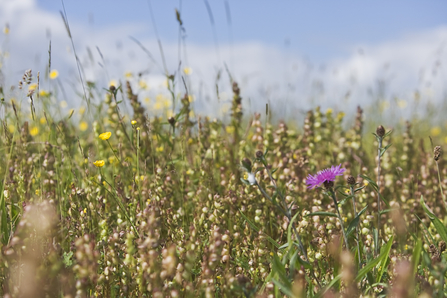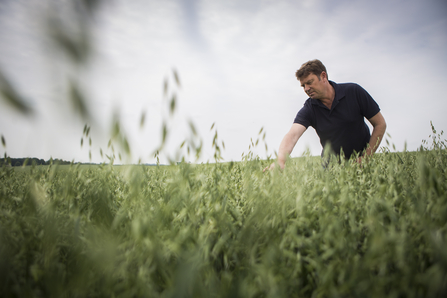What do pollinators do for us?
We have pollinators to thank for every third mouthful we eat. Not only do they pollinate our food crops, but they’re also vital for the survival of other wild plants that support so much of our wildlife.
Most of us tend to think of bees in relation to pollination, yet insect pollinators are an incredibly diverse group. Honeybees are mostly kept in managed hives, and are likely responsible for pollinating between 5-15% of the UK's insect-pollinated crops. That leaves 85-95% of the UK’s insect-pollinated crops relying on wild pollinators. Many species of bee, wasp, moth, butterfly, hoverfly, fly and beetle provide an essential service in the UK (and globally) pollinating £690 million worth of crops annually. Taking over this job ourselves would be difficult and time-consuming and would cost us an estimated £1.8 billion every year!
Why are pollinators under threat?
Three bumblebee species have become extinct in recent decades. The recent European Red List for Bees reports that almost one in ten species of wild bee face extinction, and over the past 50 years, half the bee, butterfly and moth species studied in the 2013 State of Nature Report have declined.
We can directly link these declines to changes in the way we farm. The intensification of agriculture has led to the destruction of habitat, and what is left is becoming increasingly fragmented. Further habitat loss is driven by urbanisation, and insect pollinators are also affected by the heavy use of pesticides and herbicides, more habitat the effects of climate change, and disease.

Clattinger Farm - Barney Wilczak
Where to see wildflower meadows
Wildflower meadows are prime pollinator habitat but we’ve lost 97% of them since the 1930s
What can you do to help?
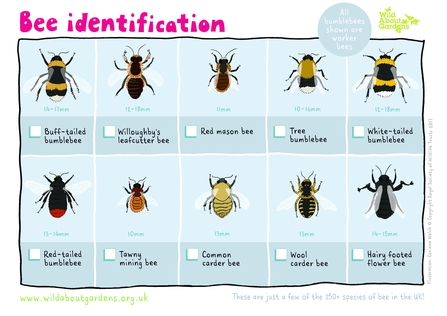
How are the Wildlife Trusts helping?
We are involved in a number of projects working to protect our pollinators. Find out all about some of the work we're doing below:
Stirley Community Farm
Stirley Community Farm is bringing back wildlife to farming. This project run by Yorkshire Wildlife Trust is working with local people to achieve healthy living and a healthy environment in Huddersfield. Covering 240 acres of once intensively farmed, Yorkshire Wildlife Trust took over the abandoned farm in 2011, transforming it. Stirley farm has a thriving food training garden, an orchard, bee hives, and ongoing grassland restoration work will continue to increase the number and diversity of flowers, insects, birds and mammals.
Getting Bristol buzzing

©Paul Hobson
Get Bristol Buzzing is the pollinator strand of Avon Wildlife Trusts' My Wild City. Eight organisations have come together to develop the Greater Bristol Pollinator Strategy and work towards a joined-up approach to pollinator conservation in the Greater Bristol urban area, linking together existing and new projects that help pollinating insects under the Get Bristol Buzzing brand.
The Bee Coalition
We've teamed up with the UK's leading environmental groups to form the Bee Coalition. The Bee Coalition works to bring attention to the plight of and public concerns about the future of pollinators, and to inspire and engage policymakers, industry and the public to protect these invaluable, irreplaceable animals.
Campaigning for a greener UK
Campaigning for a greener UK
Along with 12 other environmental organisations we are part of GreenerUK, campaigning for a new UK Environment Act. Leaving the EU puts our wildlife protections at risk, but our departure is also an opportunity. We are working to not only maintain the environmental protections already in place and make sure the government deliver on their 'green Brexit' promises, but also to make the UK a world leader in environmental policy.
Saving the shrill carder bee
Gwent Wildlife Trust teamed up with farmers, landowners, conservationists and the public to save the rare Shrill Carder Bee from extinction. The Shrill Carder is one of the smallest members of the bumblebee family and also the most endangered. The wildflower-rich habitat it depends on is disappearing. Although once common across Britain, the bee now has only a few places it calls home, the Gwent Levels being one of those places.
Jordan's Farm Partnership
Farmers who grow oats for Jordans Cereals are part of the Jordans Farm Partnership - a unique collaboration of Jordans farmers, The Wildlife Trusts, Linking Environment And Farming and the Prince’s Countryside Fund. Working closely with their local Wildlife Trust Farm Advisor the farmers on the 42 farms are encouraging bees and other pollinators by creating flower rich field margins, establishing grassy margins along field boundaries and allowing hedgerows to grow and spill over.
Five simple actions 🐝
Here are five simple actions you can take at home to help pollinators:
- Plant for pollinators: Grow more nectar-rich flowers, shrubs and trees to provide for pollinators throughout the year.
- Let your garden grow wild: Leaving patches of land to grow wild let wildflowers grow and make great nesting and feeding sites.
- Put away the pesticide: They can harm pollinators and many other beneficial invertebrates. Consider alternatives and only use pesticides as a last resort.
- Leave the lawnmower: Cut your grass less often, and remove cuttings to let plants flower.
- Build a bee hotel and avoid disturbing or destroying nesting or hibernating insects in grass margins, bare soil, hedgerows, trees, dead wood or walls.

